General Air Plant Care: Tips and Tricks
Air plants or tillandsias have become quite popular in recent years. These little guys are relatively easy to care for and make for a great office or classroom plant! When it comes to air plant care, it is important to closely monitor how your plant is responding to their environment. While some species are more hearty and can handle period of drought, others require a bit more attention. Be sure to choose a species based on the conditions of your home and the time you are able to put into them. Keep reading to find out more about general air plant care
Be sure to browse our California-grown air plant selection here.
Origin
Air plant care is all about understanding what conditions plants experience in their natural habitat. Air plants are from the neotropical realm, including southern Mexico, South America and the Southern United States. These warm and tropical conditions are ideally what air plants need in order to thrive in your home.
General Care
Light
Air plants do best in bright-indirect sunlight. The fuzzier, xeric air plants, such as the T. Xerographica or ,T. Ionantha can handle some direct sunlight. However, the T. Bulbosa Guatemala air plant requires less sunlight as they grow in tree canopies where they are exposed to only filtered sunlight.
In general, it is safe to say that you cannot go wrong if your air plant is receiving bright-indirect sunlight. Pay close attention to the afternoon sunlight, often times the harsh light can burn the leaves of your plant if placed too close to the window.
For more in-depth information about tillandsia care, see this blog post.
Water
Air plants might not need soil to survive, but they do need water! The correct mode of watering has been up for debate. Some people swear by soaking and others swear by misting. In our experience, a mixture of misting and soaking has yielded the best results. In drier indoor conditions, it is best to soak them once a week for 15-20 minutes. However, the T. Xerographica is an exception to this standard, as it originates from a semi-dry climate and is drought-tolerant. We have found that soaking once every two to three weeks or misting biweekly is advisable for these xeric species.
Take extra caution to remove all of the excess water from the nooks and crevices of the air plant. This is where water may build up and eventually cause the plant to rot. To do this, gently shake the water off the leaves and hang the air plant upside down to dry. We recommend doing this in the morning hours so the plant has enough time to dry.
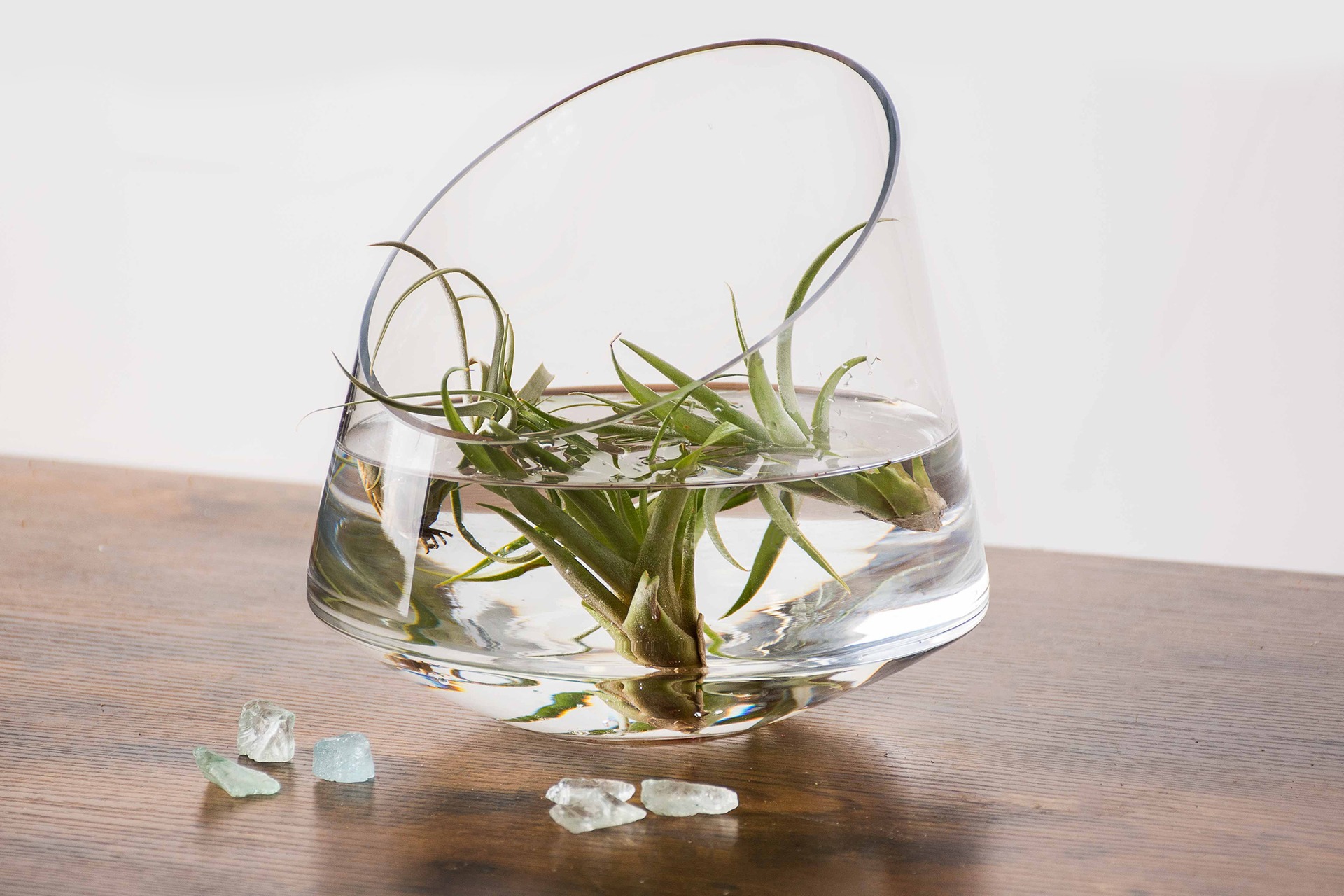
Humidity
Most air plant species will do just fine in about 65% humidity. If you live in an arid climate, you may want to buy a humidifier for your air plants. However, this is not necessary if you already live in a tropical region. You can also mist your air plants to provide added humidity, however make sure you do this in the morning so they have time to dry while the sun is still shining.
A kitchen or bathroom is an ideal indoor environment for an air plant, as there is added moisture in the air.
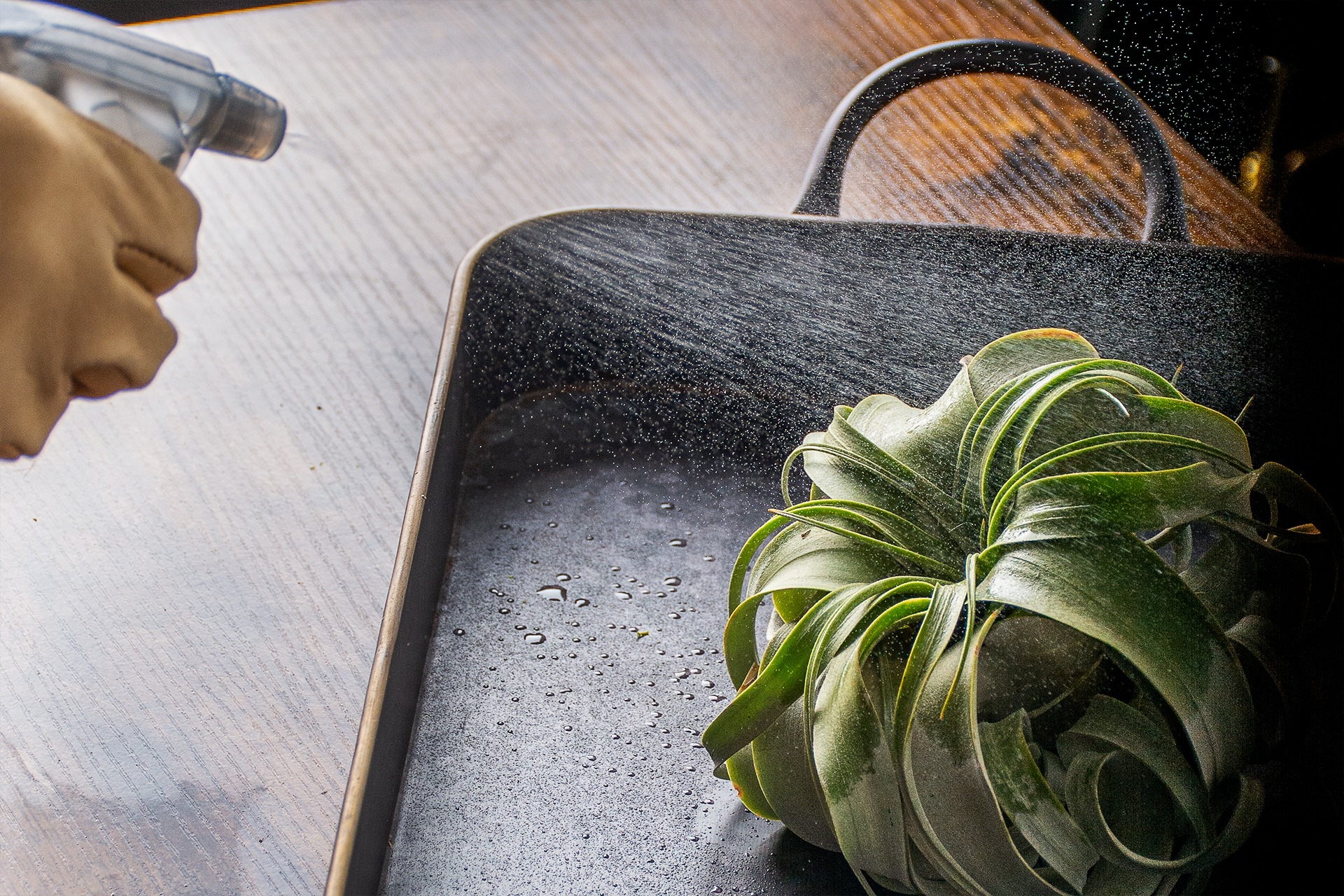
Temperature
Air plants can handle temperatures anywhere from 50 to 90 degrees. Pay extra attention to your plant during hot summer days. If temperatures exceed 90, then you may want to give them a mist a couple times during the week.
If you live in a warm state, like Florida, your air plants can live outside in the shade! Just make sure they do not receive too much direct sunlight.
Pruning
If you notice dead and crumbled up leaves, you can actually cut them off with sharp shears. Make sure to cut at an angle, taking extra precaution to avoid cutting into the base of the plant.
Pruning dead leaves will also prevent excess water from building up in and reduce the changes of it rotting.
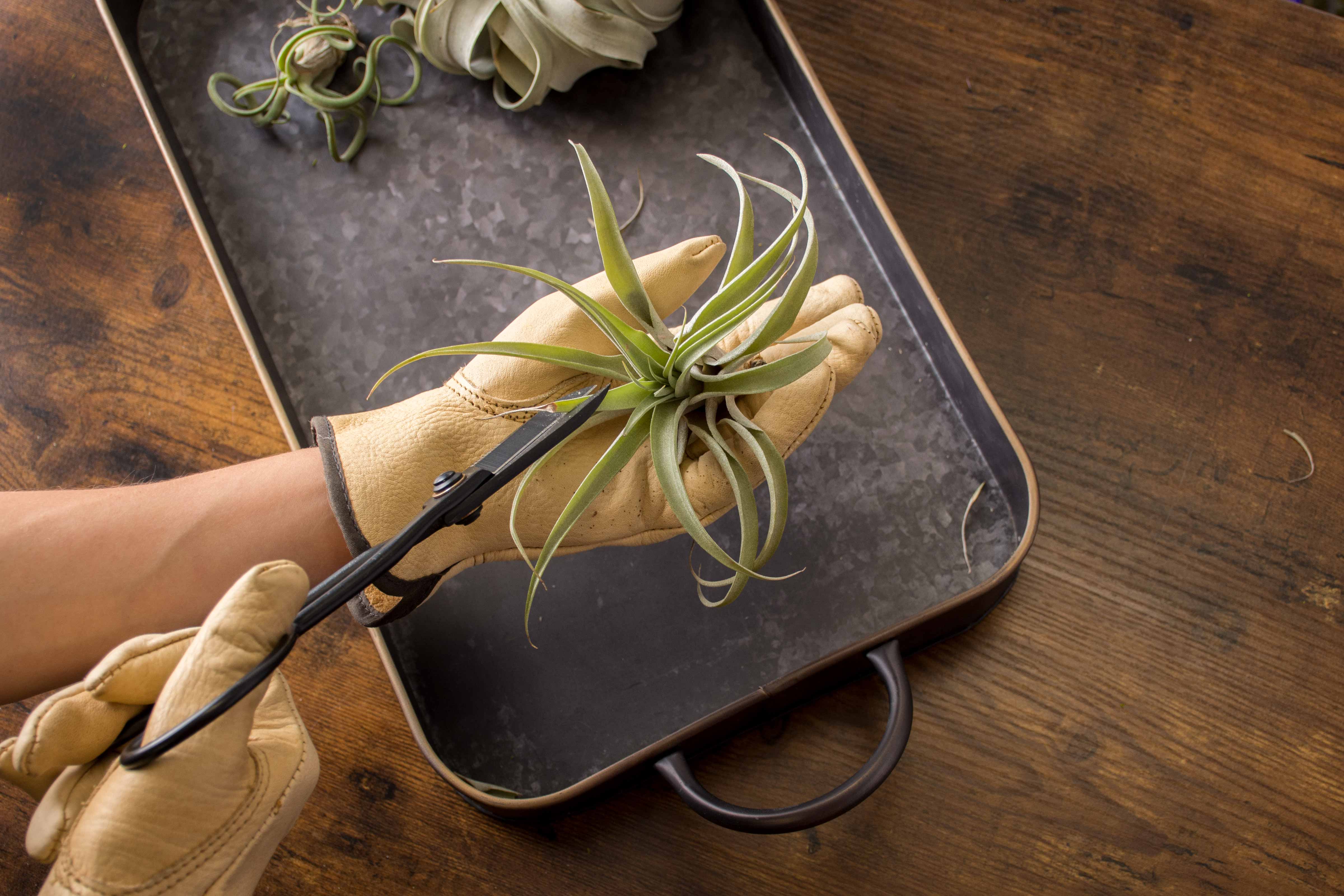
Air Flow
It is important for your air plants to have adequate air flow, meaning they should not be placed in a closed terrarium. If you receive enough air flow, your plant should completely dry for 3 to 4 hours after a soak.
Blooming & Clumping
Air plants bloom once during their lifespan. Following this, you will start to see “pups” or offshoots growing from the mother plant. You can either remove the pup when it is about half the size of the mother plant or you can leave it attached. If you choose to leave the pups attached, together the plants will turn into an air plant “clump” (see below). The decision is up to you!
Shop the Tillandsia Ionantha Ecuador Air Plant Clump here.
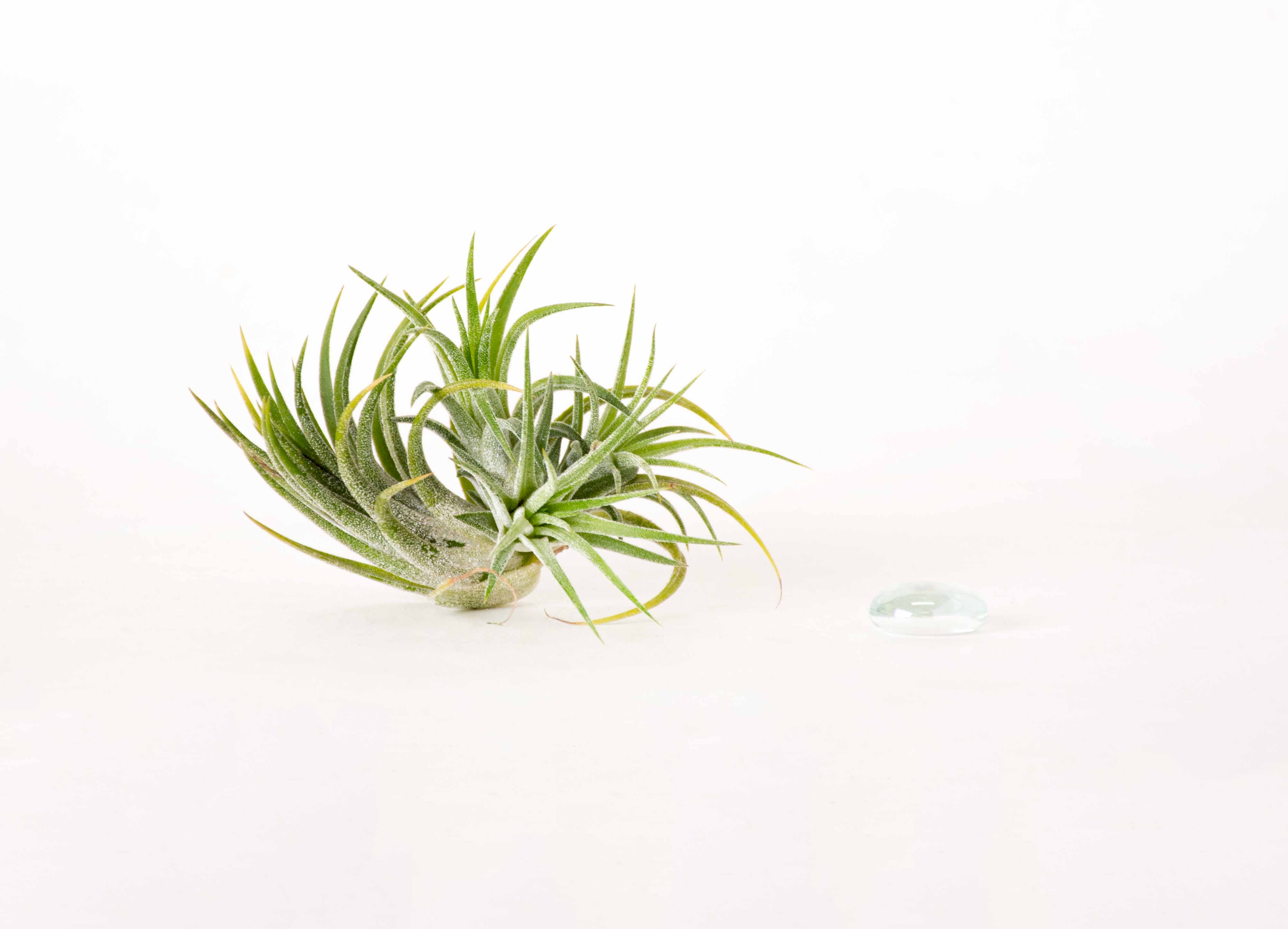
Final Note
While air plants require minimal maintenance, that does not mean they can handle being abandoned! Please note- while they may look aesthetic in your windowless office, they will not look like this for long… Like all other plants, air plants need light to photosynthesize.
Be sure to check out our blog on unique ways to decorate with air plants.
Happy growing!
Cheers,
SuperMoss


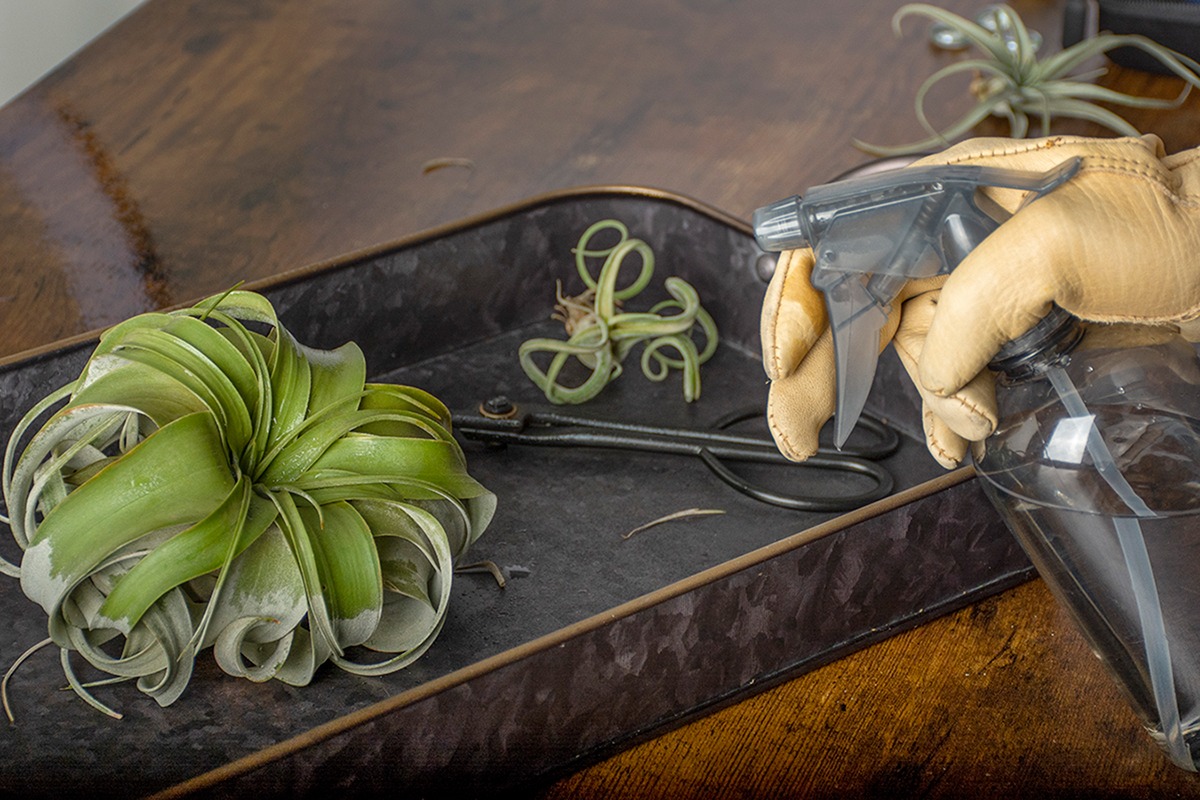



Leave a Reply